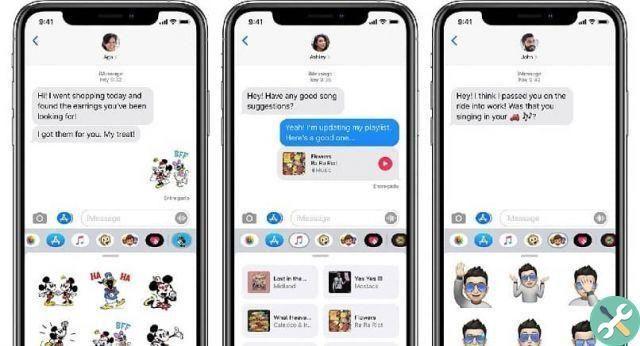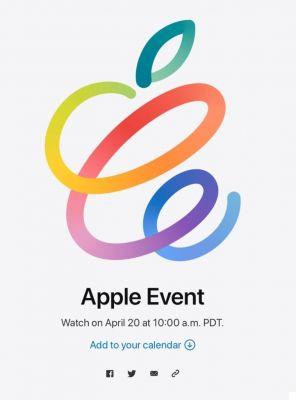
When you don't stop receiving notifications constantly, you end up muting your phone, or worse, muting the group or sender.
We must try to reduce the number of messages, not just to save data, not just to improve the planet's ecology by using less energy, but to mentally free the participants in a conversation. Think that every time you send a message you interrupt another (or others), damaging their efficiency, not only for the time you take away during the conversation, but also for the time it takes later to return to a state of concentration in the conversation that was interrupted.
For this messages must be clear and understandable, leaving no room for double interpretations. Also, we need to group everything that is possible in a single message and omit anything that does not contribute to anything or is not necessary.
What we will talk about applies to the personal and professional field, to any type of tool, especially chats, such as Messages, WhatsApp, Telegram, Skype, Teams… Since in all cases the problems are usually the same.
These are my ten tips from my personal experience over a few years:
- Use written messages to record data that is not to be confused. For example, it is better to send an address, a phone number, some measurements… via a written message than a telephone conversation. Then both the sender and the recipient will see the data clearly without a doubt.
- Do not use written messages to discuss or clarify, or if you need an immediate response. If there is something you do not understand, if there is something that is not clear to you or whose answer you should know on the spot, it is better a phone call to resolve the doubts, the nuances. If you want, you can later leave a message with the summary of the agreement, as a clarification and reminder.
- You can write more than one word per message: it's awful to get a sentence in multiple posts. Nothing happens, the recipient can wait a few seconds for you to finish writing everything you have to say, the world will not end. Also, use periods, commas, questions, admirations… you will make the message more clearly understood, a misplaced comma can lead to confusion in the message. The line break exists, you can do "intro" and continue writing in the same message, but in a new paragraph. This way, the whole message will go in one sending and you will be less disturbing to the recipient. At this point I want to make an exception: if you want to send information that the recipient has to copy, it might be better to send it in a separate message, such as a phone number or an email address. Depending on the program you use, it doesn't allow you to select a part of the text to copy it,
- Please correct your message before sending if you encounter an error, instead of sending another message by correcting: If the software you are using allows you to correct a message that has already been sent, such as Teams or Telegram, it is better to correct the message instead of sending another. That's one less message and a cleaner conversation.
- Questions with multiple options are not answered with "Yes" or "No": It's frustrating to ask someone to choose between two options and he replies "Yes", but which one did he say yes to? If they ask you, for example, if you want to eat meat or fish for today, answer "meat" or "fish", but not "Yes". This may sound silly but it happens often, especially when the sender asks the question in multiple messages, with an option in each message.
- Clarify which question each answer corresponds to- Sometimes the sender sends you multiple questions and the recipient answers one of them without clarifying which question each answer corresponds to. If you are asked in several separate messages if we buy beans, chorizo and cheese, the answer should be clear, for example “yes chorizo, no cheese” or “yes to all three”.
- Leave your full message from the start: it happens especially in a corporate environment, that someone sends you a message with your name, or with “Hello” and nothing else, waiting for your reply. Once you've answered, they start writing their question. This is a big waste of time for the sender and recipient, who have been interrupted and are now lazily waiting for you to ask the question. Finally, if the question is too long, the receiver gets tired of waiting, goes back to what he was doing, and that's when the question comes, interrupts it again. If you want to ask someone something send a single message, including greeting, for example "Hello Antonio, do you know if the problem of automatic recruitment through the web that was giving problems last week has been unblocked?"
- Put the recipient in position when they start a messageIt is also typical for the sender to ask a very specific question without the recipient being placed in the same context. For example "Could you complete the file?". If the recipient is doing something else, they may not even know what you are talking about. So if you start a conversation, especially on a not very recent topic, remember to contextualize the recipient, for example "Were you able to complete the sales file I sent you last week with the supplier codes?".
- Who is the message for? When there are multiple recipients, a group ... it is important that, if you ask a question or request, specify to whom the question or request is addressed. Usually a lot happens in emails with many people, where the sender can't distinguish between the people they have to put in “To” and in “CC”. If necessary, in the message itself, you can name different people if you have to make a specific request to each.
- Be ungrateful: Especially in messaging groups and emails with many recipients, it is very burdensome for everyone to start thanking for something, as it involves a lot of messages. It is preferable to be grateful at the time of the request, sound “thankful in advance…” or to thank only the sender and not everyone. This does not mean that someone does not confirm that a certain request or notice has been received, this is more for groups, especially large ones, where everyone begins to thank or make an unimportant comment, which saturates all the participants.
Sometimes I miss the times of SMS, where having to pay for them, people thought well about what they had to say and optimized the message. The hassles and interruptions were minimal.
What would you add to this list?











![Google also wants your Apple News [Updated] [2]](/images/posts/943dc0d8f28fcc4bc16fa30ed6d71f6a-0.jpg)





![Apple Vice Presidents Talk About Development of M1 for Mac [Updated]](/images/posts/c6254b668e5b3884d6b6338ccb8a02ff-0.jpg)








